Mandi Cherico recently graduated with a Master of Divinity from North Park Theological Seminary in Chicago. Born on the East Coast and raised in the Midwest, her interests include feminism, aesthetics, and Beyonce.
Growing up, I didn’t know what feminism was. I had always been an independent girl, but I never knew about any larger movement having to do with this tension I felt about being confined to gender roles.
In my senior year of high school, I had an English literature teacher, Mrs. Butcher. Mrs. Butcher was one of those cool, young teachers who high school students want to pattern their lives after. She was a strong and confident woman, committed to her faith and not afraid to speak the truth. She was both unflinching in her critique of the patriarchy and an avid wearer of bright lipstick. In short, she spoke my language. Mrs. Butcher introduced our class to feminist literature, and my mind was opened. These authors wrote about things I had been thinking my whole life but never been able to name. They taught me that there were words for this strength in me; this deep personal resistance I felt towards antiquated gender norms. The things I read in this class set me on a path of liberation, not only for myself but for other women, particularly in the context of the Church.
While feminism and gender equality require us to practically engage with and for both women and men, we’d be remiss to not read the writings of the women who shape and power the movement both inside and outside of the Church. Here are just a few books that I would recommend for anyone on the journey to claiming gender equality.
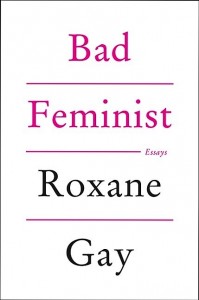 Gay is the new darling of feminist literature, and she’s earned it. Her personal essays and cultural critique are just. so. good. This collection of essays draws on pop culture, modern relationships, body image, racism and the perils of professional life. Be warned – it is sometimes graphic in nature, but her hilarious and real accounts of what it’s like being a the kind of feminist who watches The Bachelor is winsomely relatable.
Gay is the new darling of feminist literature, and she’s earned it. Her personal essays and cultural critique are just. so. good. This collection of essays draws on pop culture, modern relationships, body image, racism and the perils of professional life. Be warned – it is sometimes graphic in nature, but her hilarious and real accounts of what it’s like being a the kind of feminist who watches The Bachelor is winsomely relatable.
 Held Evans has become a household name among Evangelicals and faithful skeptics in the blogosphere. This book is her first-person account of a year following Old Testament rules for women, including her time spent living in her backyard during menstruation and the joys of wearing ankle length skirts. It’s funny and personal with reflections that challenge how the Church has interacted with women and gender through the years and into today.
Held Evans has become a household name among Evangelicals and faithful skeptics in the blogosphere. This book is her first-person account of a year following Old Testament rules for women, including her time spent living in her backyard during menstruation and the joys of wearing ankle length skirts. It’s funny and personal with reflections that challenge how the Church has interacted with women and gender through the years and into today.
 You don’t have to be a fan of rock music to thoroughly enjoy this account of feminist punk bands of the nineties. With interviews and years of personal research, Marcus weaves together the fascinating young feminist Riot Grrrl movement which challenged the violent, boys-only world of punk culture. Bands forged in this movement have a deep impact on musicians of today as well as grassroots feminists in general. In true punk fashion, the book contains some graphic content.
You don’t have to be a fan of rock music to thoroughly enjoy this account of feminist punk bands of the nineties. With interviews and years of personal research, Marcus weaves together the fascinating young feminist Riot Grrrl movement which challenged the violent, boys-only world of punk culture. Bands forged in this movement have a deep impact on musicians of today as well as grassroots feminists in general. In true punk fashion, the book contains some graphic content.
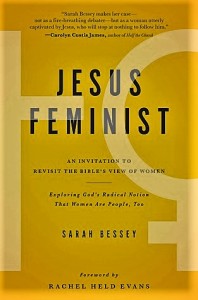 This is a great read for people who are new to the concept of biblical feminism, or perhaps have reservations about feminism in general. If you’re uncomfortable with wearing the label of “feminist,” this book will challenge your hesitation. Bessey’s writing is approachable and heartfelt. She speaks candidly to women in all walks of life but especially to those who are wives or mothers.
This is a great read for people who are new to the concept of biblical feminism, or perhaps have reservations about feminism in general. If you’re uncomfortable with wearing the label of “feminist,” this book will challenge your hesitation. Bessey’s writing is approachable and heartfelt. She speaks candidly to women in all walks of life but especially to those who are wives or mothers.
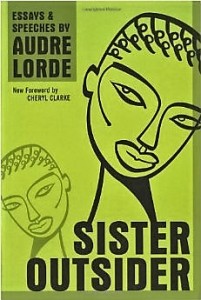 Lorde is an amalgam of wisdom, rebellion and fierce advocacy. Black, queer and female, she is one of the best sources on what it means to be marginalized in American society. Lorde is not a follower of Christ but she writes with truth and power that every person can learn from. Read this one if you want be challenged in your understanding of sexuality and social location. One of her greatest quotes: “the Master’s tools can never dismantle the master’s house.”
Lorde is an amalgam of wisdom, rebellion and fierce advocacy. Black, queer and female, she is one of the best sources on what it means to be marginalized in American society. Lorde is not a follower of Christ but she writes with truth and power that every person can learn from. Read this one if you want be challenged in your understanding of sexuality and social location. One of her greatest quotes: “the Master’s tools can never dismantle the master’s house.”

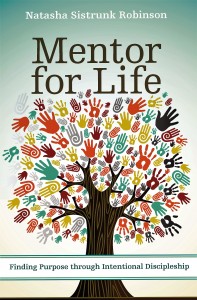


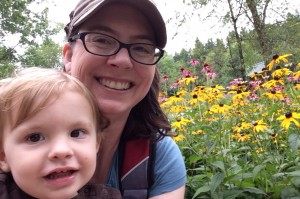
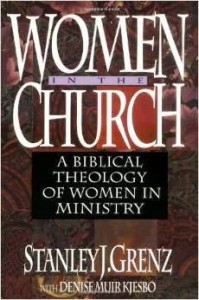 I was excited to find a book written by Stanley J. Grenz, one of my favorite theologians, and Denise Muir Kjesbo called
I was excited to find a book written by Stanley J. Grenz, one of my favorite theologians, and Denise Muir Kjesbo called  Under Construction: Reframing Men’s Spirituality written by Gareth Brandt is a book about the soul of a man. It takes a very different view than much of what we have read about what it means to be a man. Different than books like Wild at Heart or Real Men Don’t Eat Quiche, Brandt looks into the scriptures for an example a true spiritual man. Joseph, son of Jacob is his selected model. He uses his own occasional poetry and relevant scriptural passages to illustrate what he has labeled the various metaphors for constructing a men’s spirituality, including: beloved, dreamer, wounded, journey, sexuality, gifts, builder, reflection, reconciliation and legacy. So what does this have to do with Biblical Gender Equality. Plenty. It provides a different model of spirituality and character for men than our culture, even our western Christian culture would dictate.
Under Construction: Reframing Men’s Spirituality written by Gareth Brandt is a book about the soul of a man. It takes a very different view than much of what we have read about what it means to be a man. Different than books like Wild at Heart or Real Men Don’t Eat Quiche, Brandt looks into the scriptures for an example a true spiritual man. Joseph, son of Jacob is his selected model. He uses his own occasional poetry and relevant scriptural passages to illustrate what he has labeled the various metaphors for constructing a men’s spirituality, including: beloved, dreamer, wounded, journey, sexuality, gifts, builder, reflection, reconciliation and legacy. So what does this have to do with Biblical Gender Equality. Plenty. It provides a different model of spirituality and character for men than our culture, even our western Christian culture would dictate. 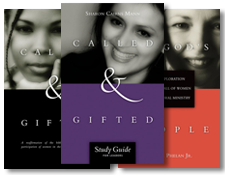
The Creation of Patriarchy
Filed under: Book & Commentary, Testimonies and Stories
Dru McLeland graduated with a Master of Divinity degree from Northern Theological Seminary in June and is currently seeking God’s next place of ministry call in the ECC. In the meantime, she and her family are enjoying their new Cavachon puppy, Zoë Ruby Regina.
Recently, I had a conversation with a young woman who is a chaplain in training about women in ministry and I mentioned the ECC’s Commission on Biblical Gender Equality. She asked, “Is there gender equality in the Bible? Isn’t the Bible patriarchal?” I answered, “Well, yes, especially in the Old Testament.” I started asking, why? I don’t see patriarchy in the creation of Adam and Eve. Both are created in the image of God. God blessed THEM, and told THEM to “fill the earth and subdue it; and have dominion…over every living thing that moves upon the earth. God did not give a command that society has to be patriarchal. I wonder is patriarchy God’s design or is it something humans created?
Several years ago, I read All God’s People (here). In that book, Jay Phelan’s brief history of hierarchal development was my first introduction to the idea that patriarchy may not be God’s creation, but I wanted to know more. Since I had thousands of pages to read for seminary classes, I set aside my question but occasionally returned to it and asked God to show me more. The Teacher did not forget my question. My final class in seminary, Women of the Old Testament, addressed it. One of our texts was The Creation of Patriarchy, (here)by Gerda Lerner (New York: Oxford University Press, 1986.) the first in a two-volume work.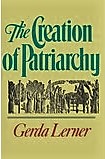
Lerner, who died in 2013, had an unusual childhood in the early 20th century that included a Bohemian mother, escaping the Nazi’s, and targeting by McCarthyism. She made the study of African American and women’s history her life’s work. For a brief biography of Lerner, click here.
Her book is an attempt “to trace, by means of historical evidence, the development of the leading ideas, symbols, and metaphors by which patriarchal gender relations were incorporated into Western civilization” (p. 10). As one who is newly conscious of the role of patriarchy in Western society and witness to its creep into the Church, but not a historian, I found her book a great place to start and a springboard for further investigation and study. She includes anthropological evidence of societies that may have been egalitarian and others that may have been matriarchal to show that not all ancient societies were patriarchal. She challenges the tradition of patriarchy which she asserts has been “mystified… making it ahistoric, eternal, invisible, and unchanging” (p. 37). This may seem a little over the top to some, but I think it challenges us to think about our views of patriarchy and how it effects our lives as well as those around us.
One of the main ways Lerner’s writing challenged me was the connection she made between the oppression of women when they are seen as objects and how this paved the way for slavery of all kinds. Women came to be seen as a commodity, as belonging to a man or household, with their status established because of their ability or lack of ability to produce offspring. The strength of the natural urges of a mother to protect the life of a baby set her apart from men. Especially in war, this vulnerability made women more easily subdued and subjected to slavery by conquerors. Lerner hypothesizes that the enslavement of women was a precursor to slavery in general. Women came to be seen as less than human, “other” and treated as an object or commodity. Lest we think this is history only, we have only to look at the numbers of people who are victims of human trafficking because someone is willing to pay for them as a sex object. (See the US Government 2016 report on human trafficking here; find your state here.)
Against the context of Lerner’s book, I see the Apostle Paul’s letter to the Ephesians as just as radical in our day as in his. Christ came to break down the divisions patriarchal systems create. He came to create a new humanity where all are one with new identity as members of the household of God, no matter what we are able contribute, but because we are human beings, created in God’s image.
Whether one agrees with Lerner about the creation of patriarchy or not, I believe there is a challenge for us as we look at others. I ask myself and invite you to ask yourself a couple of questions. When interacting with others, do I see them as objects or commodities in anyway? Do I remember I am united in Christ with other Christians when we interact?
I would like to continue this conversation. Where have you discovered that you might be seeing another as an object or “the other” rather than God’s created person? If you have read Lerner’s book, what do you think about it? Please leave a reply.
Report This Post